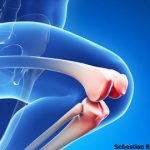Educate Patients
Successful postoperative rehab involves patient buy-in, said Victoria Gall, PT, MEd, in practice at New England Baptist Hospital in Boston. “They need to understand what they are committing to by having this shoulder surgery.”
Patients report the value of preoperative classes and education, which include information about rehab protocols, trying on the shoulder immobilizers, and accessing patient education websites. (See “Online Resources for Patients” on p. 62 for a list of these sites). She does caution her patients about commercial sites that are biased because they do not discuss any of the disadvantages of the surgery.


